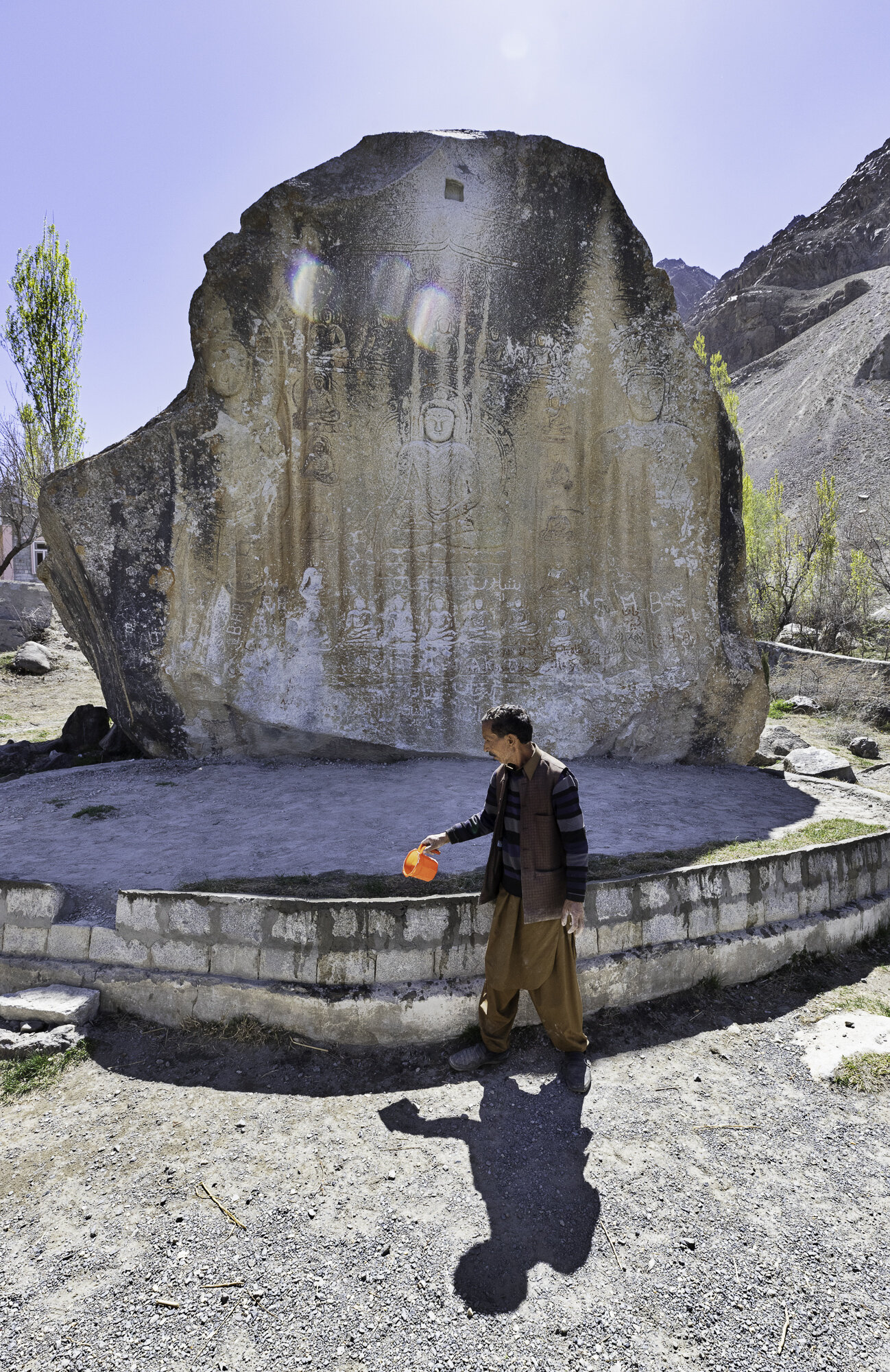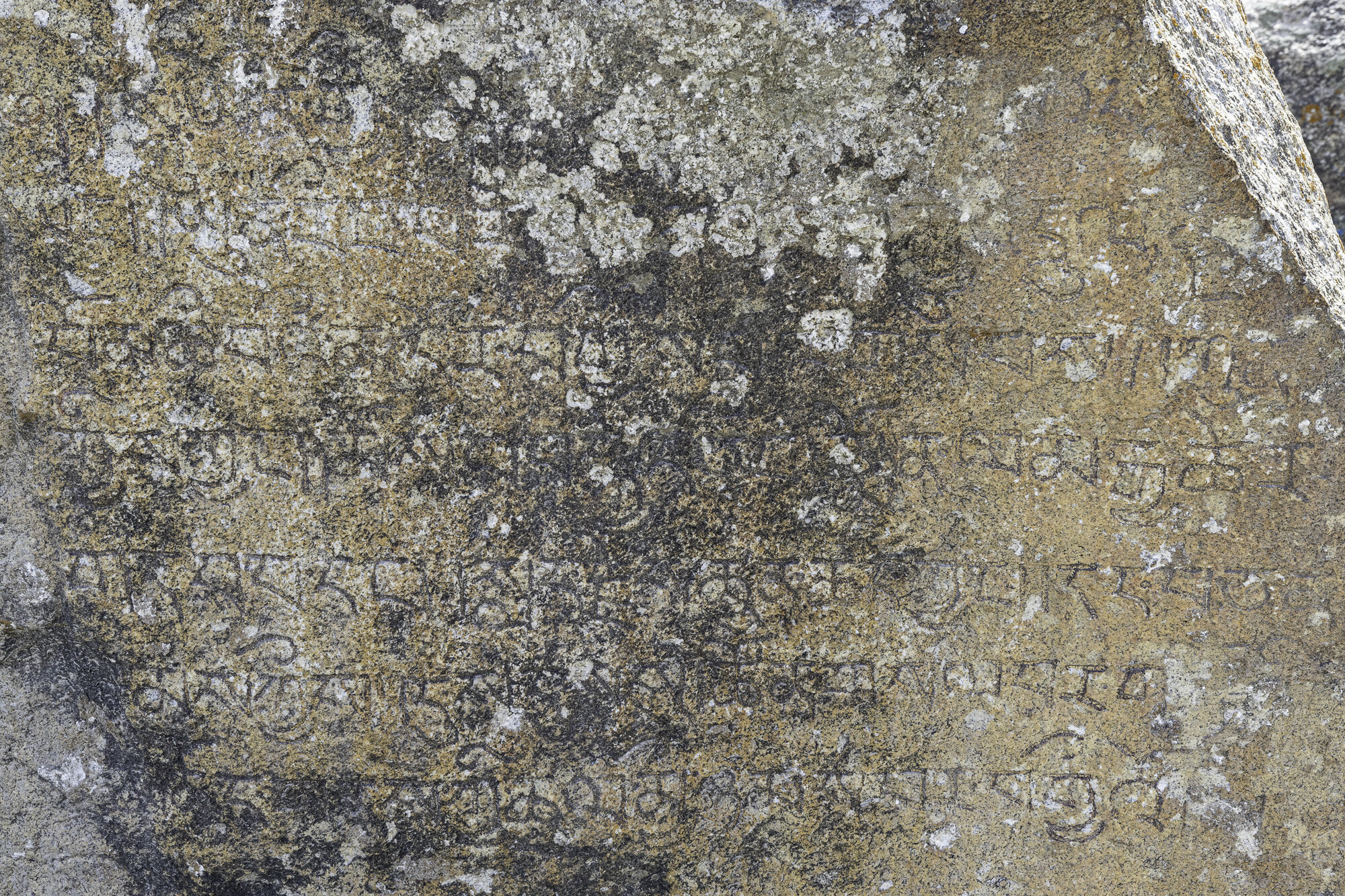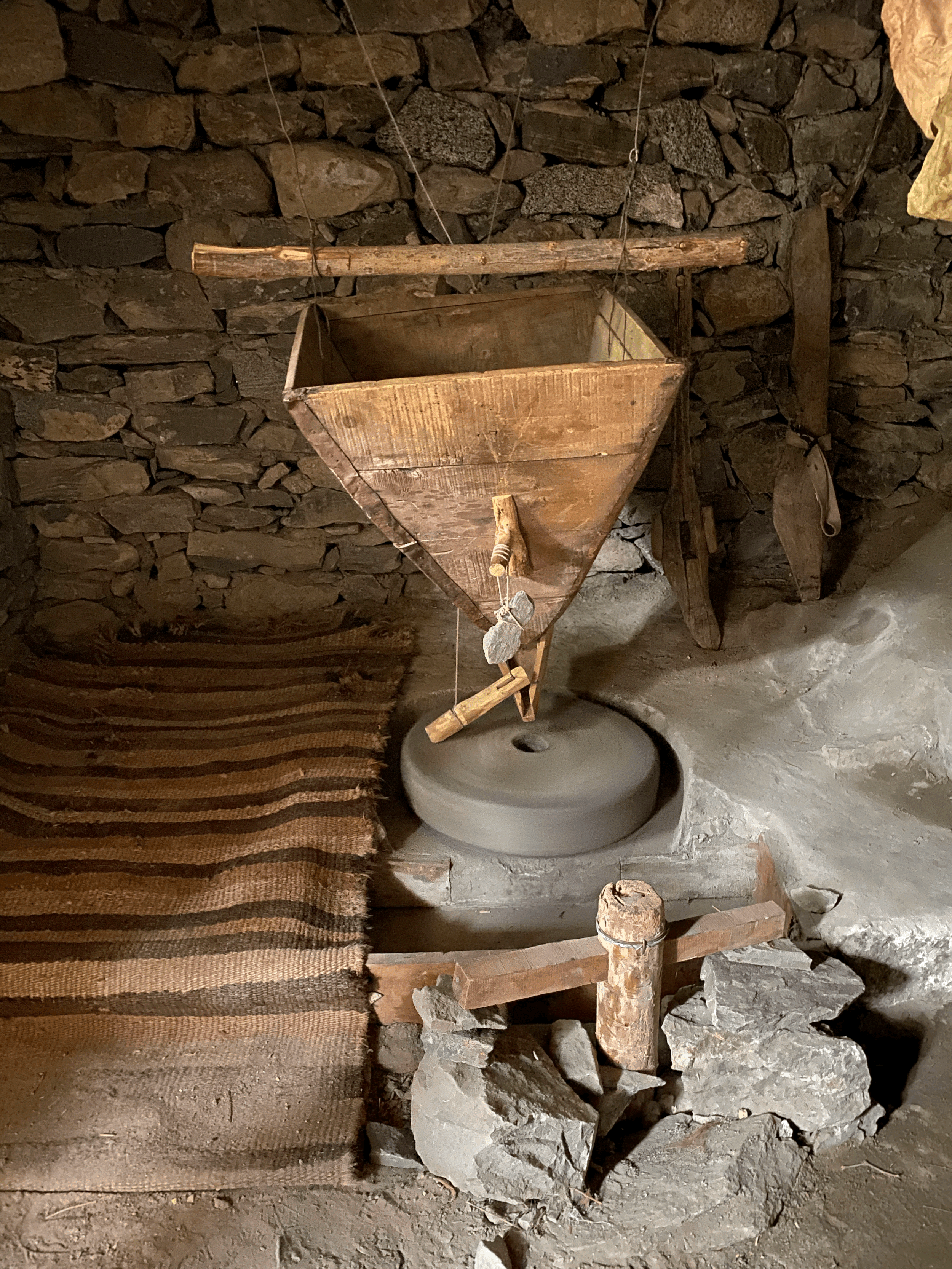Postcards from Pakistan
Postcard from the Manthal Buddha - a rock and a desert
The Manthal Buddha can be found just outside the village of Manthal, near Sadpara Lake. Buddhism came to the region in the late 7th century. Buddhists travelled throughout the Indus Valley, and you can see rock carvings and stupas across Gilgit-Baltistan. Two of the most famous sites are the Manthal Buddha and the Kargah Buddha (the subject of a previous blog).
The Manthal Buddha was carved in the 9th century, during the ‘golden age of Buddhism’ in the region. The rock is in the shape of a triangle and is approximately 6 meters wide and 9 meters high. The carving on the rock shows a meditating Buddha surrounded by smaller Bodhisattvas (past buddhas) and two standing Maitreyas (future buddhas). At the bottom of the rock are some Balti inscriptions. The carving is a Mandala, a representation of the universe and an aid to meditation. The local village Manthal is named after the carving.
The Buddha Rock is surrounded by a wall and there is a custodian. I was pleased to see that the local government has taken steps to preserve and protect the site. Some Buddhist sites have been vandalised in Pakistan as they are considered to be un-Islamic.
On the way back to Shigar we stopped to look at the Sarfaranga Desert, known as a cold desert, during the winter it can be covered with snow. The landscape is dry and dramatic. Desert surrounded by mountains. We visited in late spring, and you could feel the warm wind crossing the sand. It is hard to imagine that snow could fall here. Maybe one day I can return to photograph what would be an amazing sight of a desert covered in snow.
Manthal Buddha and custodian
Sarfaranga Desert, mountains to the front and back
Sarfaranga Desert
Sarfaranga Desert
Postcard from the Kargah Buddha
The layers of history in Gilgit-Baltistan are fascinating. The area began as a number of small, independent states but the region has had many rulers and religious influences, from Chinese, Tibetan, to Mughal, from Buddhism to Islam. All have left lasting influences on art, culture, language and architecture.
Gilgit was an important trading stop on the Silk Road. Buddhist monks from China followed the Silk Road and it became a corridor for the teaching of Buddhism across the region. From the 3rd to the 11th century Gilgit was a major centre for Buddhism and many monasteries and stupas were built.
In 1931 a monastery and three stupas were found along with a large number of manuscripts that can be dated back to the 6th and 7th centuries. The archaeologist Aurel Stein announced the discovery of the manuscripts. They are made from birch bark and because of the dry mountain air they are in a remarkably good condition. In fact, they are the oldest surviving manuscripts in India. They cover a wide range of subjects including religion, folk tales and medicine. Most of the Gilgit manuscripts are in the Indian National Archives while a small number are in the British Library and the Karachi Museum.
Why am I telling you about the manuscripts? The manuscripts included a lot of new information on the region. Aurel Stein continued to make expeditions through the area reporting on findings of monuments and rock carvings. We had come to visit the largest rock carving, the Kargah Buddha.
Archeologists believe that the Kargah Buddha carving was completed in the 7th century. The Buddha can be found high up on the Kargah Nala cliff-face. The Buddha is 15m high and looks out over the Kargah and Shukogah Rivers that flow down to meet the Gilgit River.
There is also a legend about the carved figure, known locally as Yshani. Yshani was a man-eating giantess who terrorized the area. A holy man managed to pin the giantess to the cliff. The holy man declared that she would no longer bother them as long as he was alive. It is said that the holy man is buried in the foothills and so now the giantess can never be freed.
Now that we don’t have to worry about a man-eating giantess the area is a lovely picnic spot. Recent renovations have improved the road up to the Buddha and new stairs make it easy to climb up to get a great view of both the Buddha and the valley below.
View of the Buddha from across the valley
The new road that leads up to the Buddha
There is a small bridge to cross and an easy walk to the bottom of the stairs
The walkway takes you past rushing water
Edge of an old mill
The water was used to power the mill that still works today
The start of a steep walk
Stop, catch your breath, admire the view
Steep but stable stairs
The valley quickly becomes very narrow
Closest view. The holes around the Buddha were believed to be for a wooden structure to protect the carving. Or for pinning down a man-eating giantess!






















